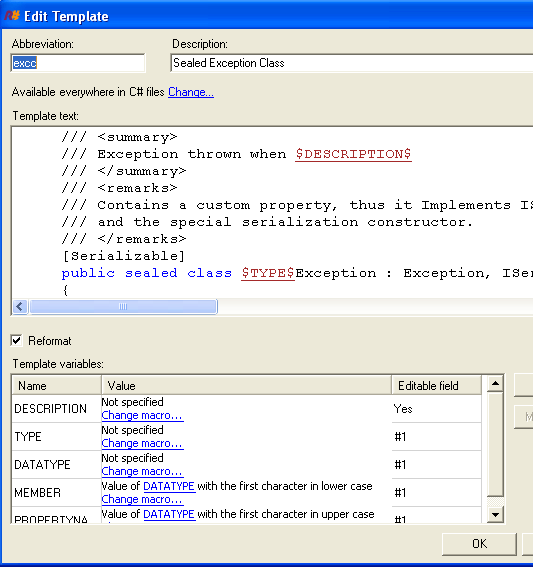Writing Custom Exceptions Using Resharper Live Templates
Writing proper custom exceptions can amount to a lot of busy work. Oh
sure, it’s easy to simply inherit from System.Exception and stop
there. But try running that baby through FxCop or passing that exception
across AppDomains and you’re in for a world of hurt (hyperbole alert!).
What makes writing a custom exception a pain? First, there are all those
constructors you have to implement. You also need to remember to mark
the class with the Serializable attribute. Also, if your exception has
at least one custom property, then you’ll want to implement
ISerializable, a special serialization constructor, and more
constructors that accept the new property.
On page 411 of Applied .NET Framework Programming, Jeffrey Richter outlines the steps to write a proper custom exception class.
If you have this book, you should definitely read and learn these steps. Or if you are a ReSharper user, you can be lazy and just use the Live Template (akin to a Whidbey Code Snippet) I’ve created and posted here for your exceptional enjoyment.
Unfortunately, I do not know of any way to export and import live templates within ReSharper, so you’ll have to follow the steps I outlined in a previous post.
I have included two templates. The first is for a full-blown sealed custom exception with a single custom property. It’s easy enough to add more properties if you need them. The second is for a simple custom exception with no custom properties. The ReadMe.txt file included outlines a couple of settings you need to make for a couple template variables.
I ended up using the abbreviation excc to expand the full exception
class and excs for the simple exception class. This ought to save you
a lot of typing. Below is a screenshot of the full template…

Comments
3 responses